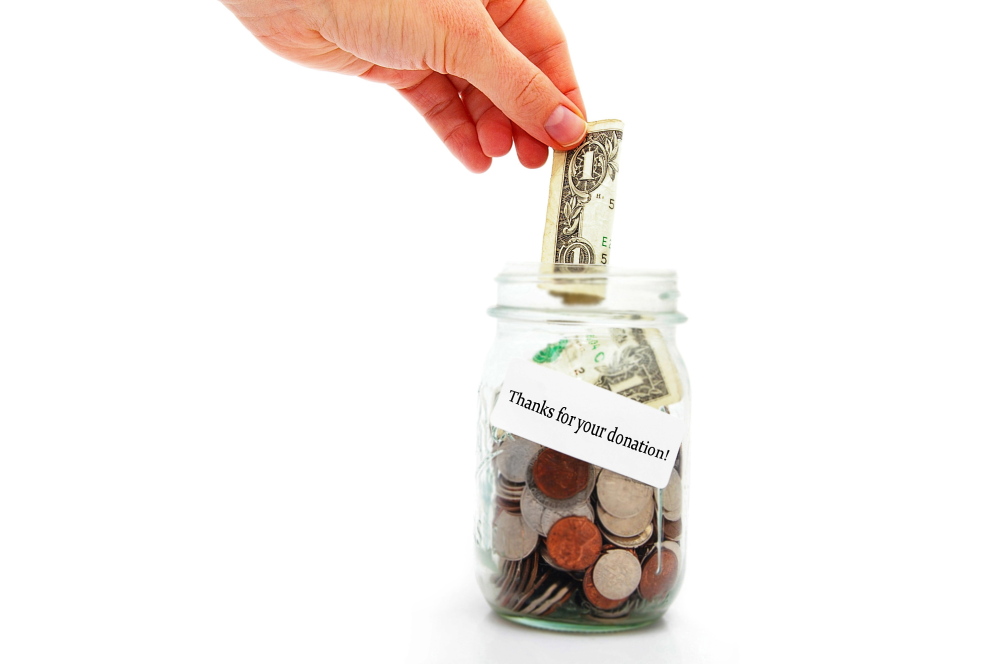Nonprofit groups in Maine, like those around the country, have a high profile this time of year. Knowing what the holidays represent, members of the public dig into their pockets to give to organizations that help the less fortunate.
And to ensure continued support for those who need it the most, it’s important for donors to evaluate a nonprofit’s bonafides before giving. Charity Navigator — a national watchdog organization that’s given Portland’s Preble Street the highest ranking of the 43 Maine organizations that it rates – is a good source of information.
But because groups like this don’t evaluate the hundreds of smaller nonprofits in Maine, there should also be due diligence at the local level, by neighbors making sure that charities deliver on what they promise.
Nonprofits – the biggest employer in Maine – contribute $9.3 billion a year to the state’s economy, according to a 2013 Maine Association of Nonprofits report. And they do a lot of good here, performing vital work in the social services, health care, education, community development, environmental and arts and culture sectors. But although most nonprofit employees work hard and are committed to their organization’s mission, no nonprofit is immune from wrongdoing.
In fact, fraud costs the nation’s nonprofits an estimated 5 percent of revenue, an amount equal to $77 billion a year. The financial impact of misconduct is particularly acute at nonprofits in states like Maine, where over half of all public charities have an annual income of less than $50,000.
Since smaller organizations have fewer assets than larger groups, any financial loss hits them harder. And they’re attractive targets for misconduct. They have relatively few financial controls in place, and they’re based in small communities, where the employee who handles the agency’s checkbook could be a neighbor or acquaintance, making it uncomfortable to question that person’s actions.
Fortunately, it doesn’t require a lot of staff or money to prevent fraud at a nonprofit.
At a minimum, volunteers on the board should require double authorizations for expenses over a certain amount and divvy up the responsibility for handling financial transactions. The person who writes the checks and makes deposits shouldn’t also be reconciling the checkbook each month. (The second set of eyes could be a board member.)
And a great deal of information is out there about any nonprofit that a donor is considering supporting. Check GuideStar, which includes figures from 1.8 million U.S. nonprofits on what they take in, what they spend and what they pay their executives.
Donors shouldn’t give disproportionate weight to overhead costs — the percentage of each donation that goes to infrastructure, administrative and fundraising expenses. Planned well, overhead spending, on things like rent, salaries, utilities and website hosting, supports an agency’s programs — it doesn’t detract from them. Also online, at websites like Charity Navigator, are evaluations of bigger nonprofits. But what about small, local groups? Review their mission, and check their results, Katherina Rosqueta of the Center for High Impact Philanthropy suggests: “Is the group’s goal to enhance the quality of art and culture in your town? Go to a show and see how many people attend.”
Theft from a business is perceived as a private matter, involving just that company and its customers. Theft from a charity, because of its mission and its tax-exempt status, is rightly perceived as theft from the public at large. So it’s everyone’s responsibility to hold nonprofits accountable for the public resources with which they’ve been entrusted.
Copy the Story LinkSend questions/comments to the editors.



Success. Please wait for the page to reload. If the page does not reload within 5 seconds, please refresh the page.
Enter your email and password to access comments.
Hi, to comment on stories you must . This profile is in addition to your subscription and website login.
Already have a commenting profile? .
Invalid username/password.
Please check your email to confirm and complete your registration.
Only subscribers are eligible to post comments. Please subscribe or login first for digital access. Here’s why.
Use the form below to reset your password. When you've submitted your account email, we will send an email with a reset code.